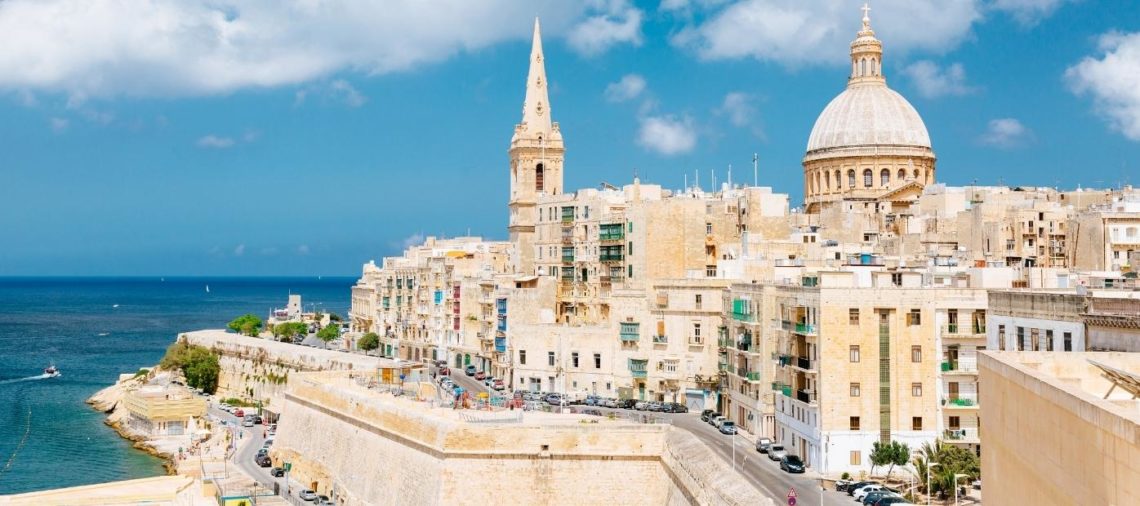Certainly, Malta is one of the travel destinations that, at first sight, is quite hard to define. When you make your holiday plans and ask yourself the question, “where am I going this year?” Malta appears before your mind’s eye as a little unknown. Want to stay at the beach? Malta doesn’t sound ideal, although you’ve heard you can get a great sunbath there too. Want to visit? Yes, but what? What are the best things to do in Malta on a Maltese vacation?
Can such a small island satisfy the traveler’s hunger for information and… photos? Lots of questions that Google tries to answer, but which are best checked out and… experienced. So I hopped in my TukTuk and headed to Malta to answer the questions. Primary to the one regarding what to do in Malta.
Malta, a bit of history

Finding a country at the crossroads of so many influences is hard. In the middle of the Mediterranean Sea, Malta has always been in the path of all those who roamed the waves fighting battles or forming empires. Luck or bad luck? It’s hard to say, but this small, arid archipelago has been strained.
Phoenicians, Carthaginians, Romans, Byzantines – they all somehow marked the patch of land between Europe and Africa. The high point came in 60 AD when the apostle Paul (known as St Paul) was shipwrecked in Malta while traveling to Rome and converted the Roman ruler Publius to Christianity. Over time, the island’s population followed this religion so that the Maltese were all Christians by the end of the 3rd century.
But in 870, Malta was conquered by the Arabs, who would remain here for more than 200 years, influencing the culture, civilization, and, not least, the language of the place. The Arab influence can still be seen very clearly today in many parts of the island, especially in some towns, such as Mdina, known as the City of Silence.

Arab domination was interrupted in 1090 by the Normans, specifically Count Roger, who had the nerve to conquer the island, as he had done with Sicily. For a time, Malta became part of the kingdom of Sicily, but the Sicilian kings took little interest in the Maltese, leaving them to organize themselves. Until 1266 when, ta-daaaa!, Malta and Sicily were conquered by the French. Then, in 1283, by the Aragonese. Then, in 1412, by the Castilians. After Castile and Aragon united, Malta became part of the mighty Spanish Empire.
In 1530, however, the King of Spain was to give the island to the Knights of the Order of St John, also known as the Sovereign Order of the Knights of Malta. Who were (and still are) these “boys”? Some very cool ones. The Order of St. John had been founded as a religious order in 1050 in Jerusalem by a group of Italian merchants. The Papal Bull of Paschal II recognized it in 1113.
Following the attacks on the Holy Land, the order became military, defending hospitals, the sick, the needy, and pilgrims. It gained some territories, lost others, and dominated Malta until 1798 when Napoleon took control of the island and threw it under another influence: the French.
By then, however, the Maltese faced another challenge. In 1565, the Turks attacked the island, and the Knights of Malta, from the Order of St. John, faced 81 ships carrying more than 30,000 Ottoman soldiers. On 18 May 1565, the Turks landed in the fishing village of Marsaxlokk (which you will read about in another chapter of my Maltese trip) and were preparing to conquer the island triumphantly.
Only at the head of the Knights of Malta was a 70-year-old Frenchman called Jean Parisot de la Vallette (the present Maltese capital is named after him – Valletta) who skilfully led the 9,000 men at his disposal, eventually succeeding (with the help of another 8,000 Sicilians) in driving the Turks out of Malta. After their departure on the land of the nowadays Valletta, he decided to found a new fortified town to stand in the way of the invaders. Thus Valletta was born.
Unfortunately, in the years that followed, the Knights lost their strength due to their growing passion for alcohol and women. They couldn’t resist Napoleon’s army, and the French quickly conquered them, plundering their treasures from the churches but, on the positive side, abolishing the Inquisition.
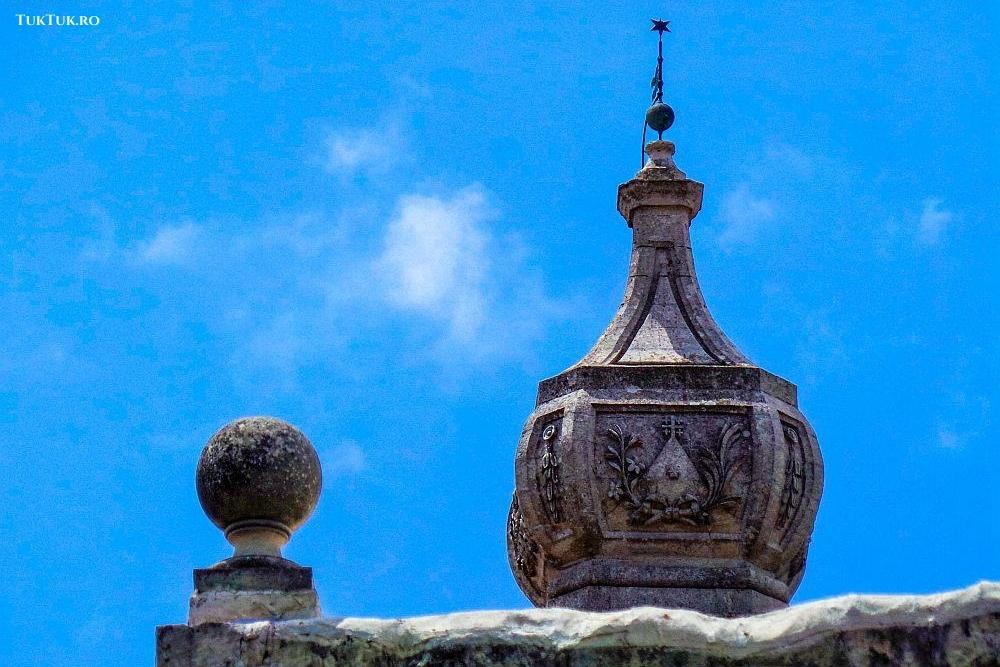
Bearing the French increasingly hard, the Maltese asked for help from the English, who would make them surrender in 1800.
This was the beginning of the British era for Malta, which would leave its mark on the country’s history until 21 September 1964, when the Maltese finally gained independence. At first, the Queen of England was head of state, but in 1974 Malta became a republic.
This is the condensed (and obligatory) story of a seemingly insignificant place on the map of Europe whose history pulses through so many monuments, cathedrals, and buildings – which we will discuss and see in this article and in some following episodes.
Merħba! Welcome to Malta!
The Maltese archipelago consists of three main islands (plus 18 smaller, uninhabited ones). Malta is the main island and the largest. North of it is Gozo and tiny Comino (just 3.5 square kilometers), the latter with only four inhabitants (members of a family who own a small hotel. A policeman and a priest travel daily from Gozo, especially during the tourist season, to offer their services to visitors).
A few things strike you on the way from the international airport to the hotel (wherever that may be – in my case, the Seashells Suncrest in the resort of Qawra), somewhat defining your first contact with Malta. The first is the barren landscape, and the second is the yellowish color of the houses.
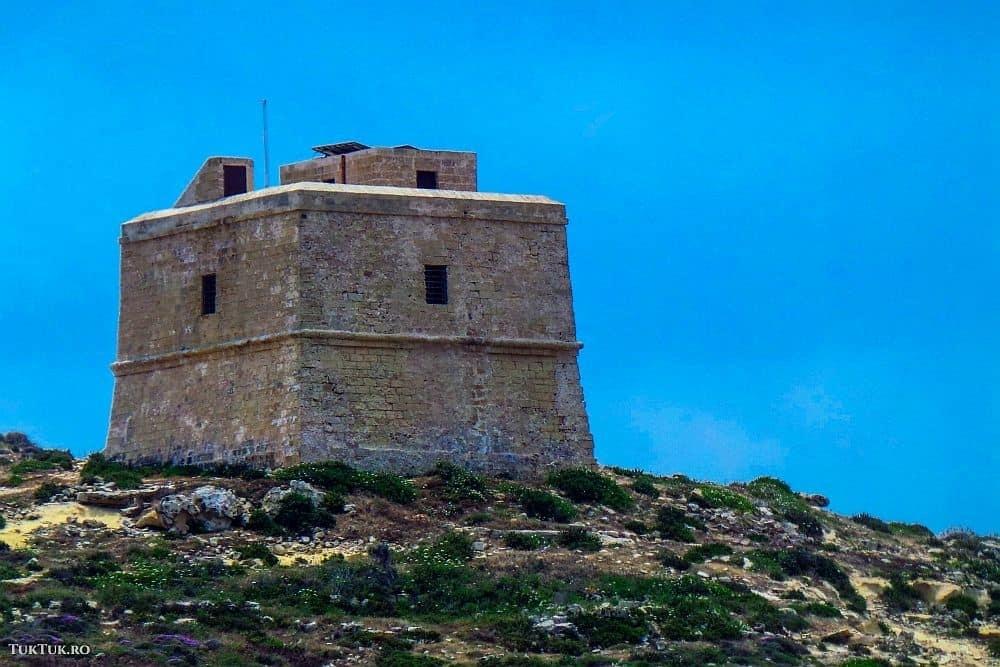
But since we were talking above about the history of the place, you can’t help but notice from the coach window a series of defensive towers stretching from place to place along the coast, often mentioned by any guide who accompanies you on your trip (even if you have a guide from your home country, in Malta any group must be accompanied by a local guide; otherwise the fines are very high).
There are 24 defense towers on the island of Malta (Gozo has six more, Comino has just one) built between 1605 and 1720 to warn of enemy Ottoman ships approaching the archipelago. A signaling system, a sort of wireless telephone, circled the island in a matter of minutes: fires were lit at night, and gunshots were fired during the day.
The towers have survived to the present day, some even well-preserved. There are five types of such buildings (Wignacourt, Lascaris, Perellos, etc.), each with its shape and specificity. And, of course, each of them bears a name, mostly of saints.
I mentioned earlier that the Maltese buildings’ color is not necessarily visually “appealing” on the first impact. It’s a dirty and somewhat uniform yellowish color that doesn’t take you in at first sight but which, once you “get it,” you take for granted and integrate into the general philosophy of the island.
Malta has very few natural resources, and one of them, practically the only one to mention, is limestone. Almost all of Malta’s buildings are built from this yellowish porous limestone. When not using giant limestone bricks, the Maltese abuse stone. Those with a garden where they grow something will surround it with stones placed on each other. So there are many places where the landscape suggests you are in the middle of a relic. Which… sometimes it’s true, but many times it’s not.
In Malta, you don’t see standard walls very often: they’re limestone, or they’re piled up with stones. It takes you a while to get used to Maltese stones in a barren context, but once you do, you won’t find anything dodgy but, on the contrary, charming.
I was talking about natural resources. Although in a favorable geographical location (just 80 km south of Sicily), Malta has poor resources. The country barely provides 20% of its food needs, drinking water is limited (never drink water from the sink in Malta – it’s no good!), and there is a lack of own energy sources (except solar, obviously).
There are no forests, no rivers, and no mountains in Malta.
The Maltese economy is supported by foreign trade, manufacturing (especially textiles and electronics), and tourism.
The 300 sunny days a year are argument enough. And another area where Malta thrives: the film industry! Many famous films have been shot here, including Game of Thrones, Gladiator, Troy, Munich, Popeye, etc., and some tour companies organize tours of the locations for film buffs.
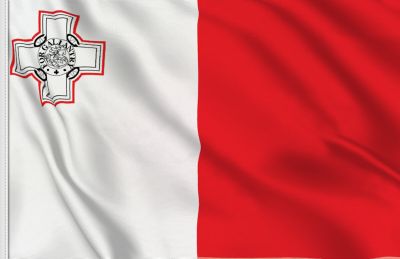
Malta in numbers
* 423,282 inhabitants
* 316 square kilometers, the area of the Maltese archipelago
* 300 sunny days a year
* 44 degrees Celsius – the highest temperature ever recorded
* 4 – number of inhabitants on the island of Comino
* 21.4 km – the distance between the islands of Malta and Gozo
* 359 churches are in Malta and Gozo
Qawra – for relaxing, St. Julian’s – for clubbing
Qawra (pronounced ‘aura’ – q in Maltese is silent) is one of Malta’s resorts which, together with neighboring Bugibba and Xemxija (harsh language, I know!), form a famous trio on the north-eastern part of Malta in St. Paul’s Bay. Renowned for its hotels, restaurants, and general… day life. Because when it comes to nightlife, you’ll want to head to the more famous St. Julian’s.
Qawra was my headquarters during my stay in Malta at the Seashell Suncrest Hotel. The resort doesn’t excel in the beach department (in fact, in general, beaches aren’t Malta’s strong point – most are small, artificial, and not very spectacular). Still, sun-seekers make up for it in spades with the pools, around which there’s quite a bit of activity, including animation teams.
As well as the many restaurants and pubs in Qawra, you can also visit the Malta National Aquarium, where you learn a lot about life in the deep, animals included. Perfect for kids, fun for adults.
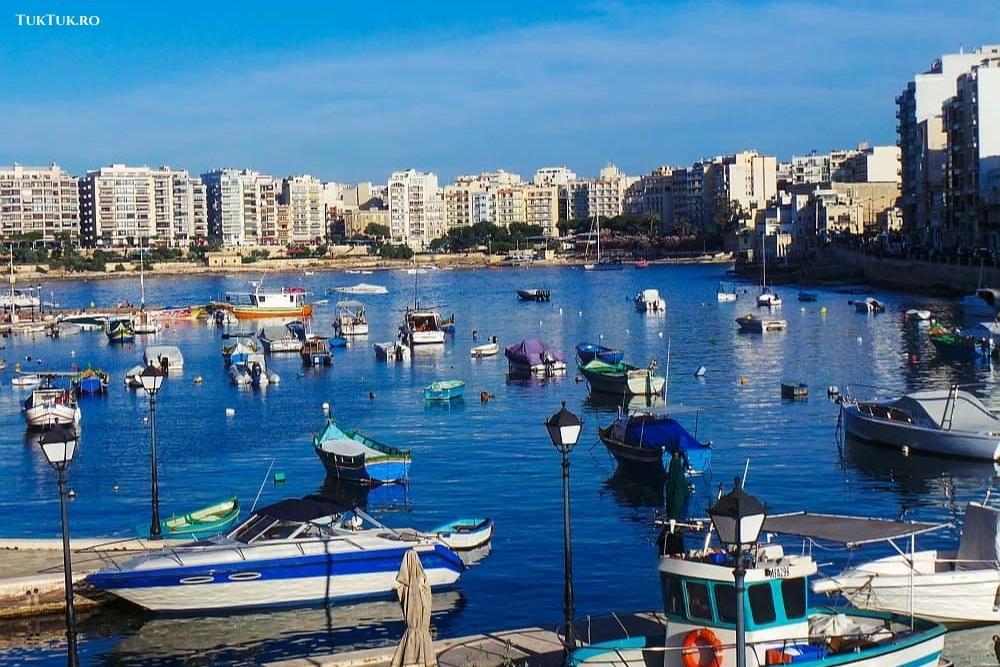
From the small balcony of Gululu Restaurant in St Julian’s, the view over the bay of the same name is perfect. Boats and (lots of) lanterns are how you could define the outdoor menu. The one inside is much more refined. Gululu is recognized as one of Malta’s finest restaurants. One that, in June, offers Festa tat-Tonn, the festival of tuna, a fish that has ancient traditions in Malta.
But before the tuna (that is, if you like fish), you can open with the starters, which include ftira, the Maltese pizza on which the hosts generously place a host of krustini toppings, mqarrun, baked macaroni or dips, which are almost unheard of on a Maltese platter: (separate) mixtures of olives, white beans, anchovies, and capers.
In another post, I’ll talk a little later about Maltese food (eating is one of the best things to do in Malta!), which is rich, tasty, and even quite sophisticated, given that the country is in the middle of the Mediterranean and southern European gastronomy is relative ‘light’.
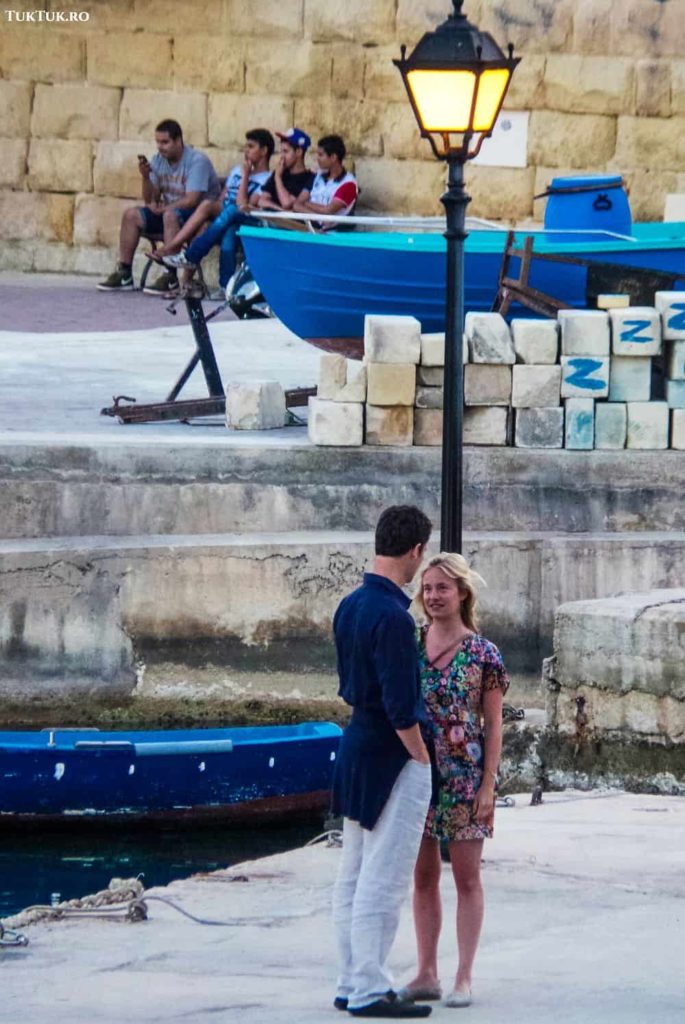
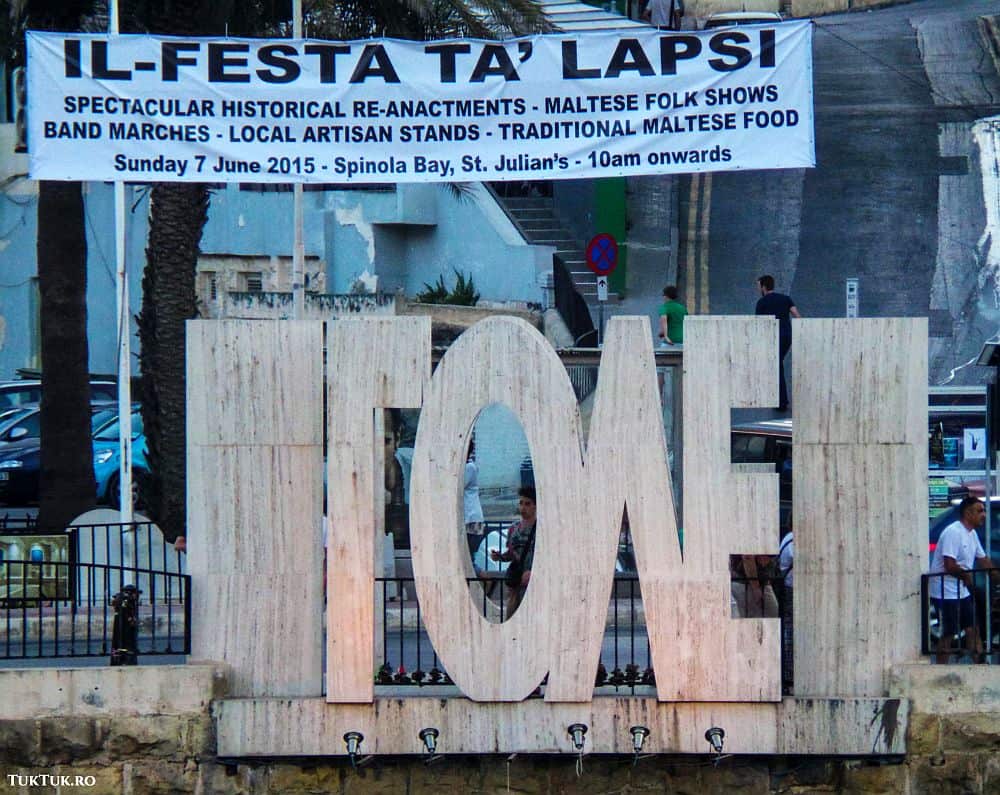
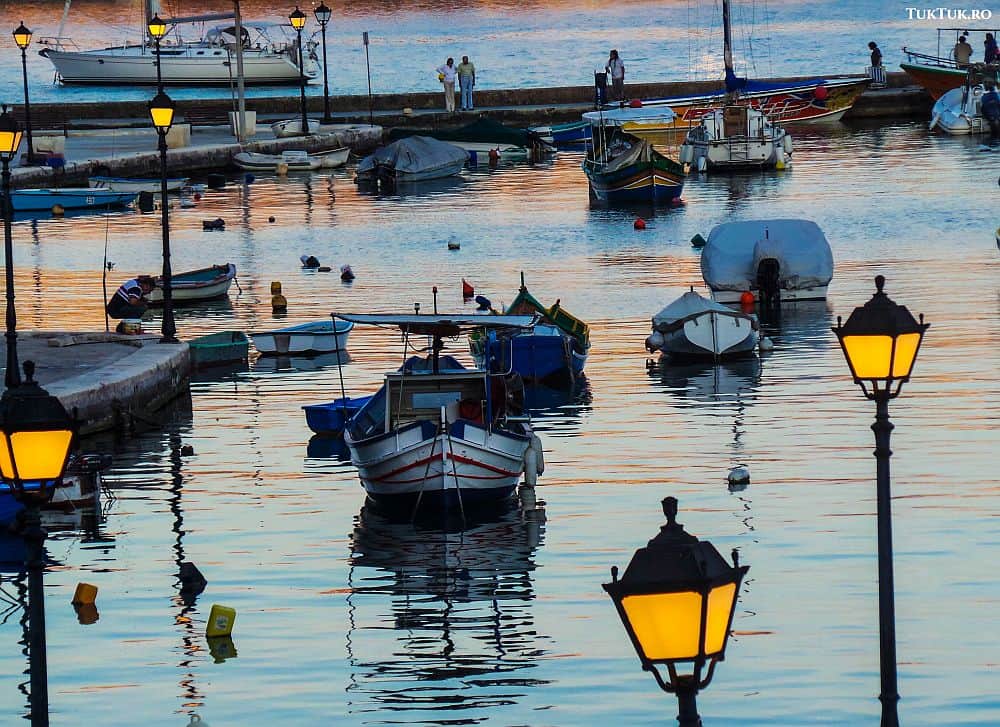

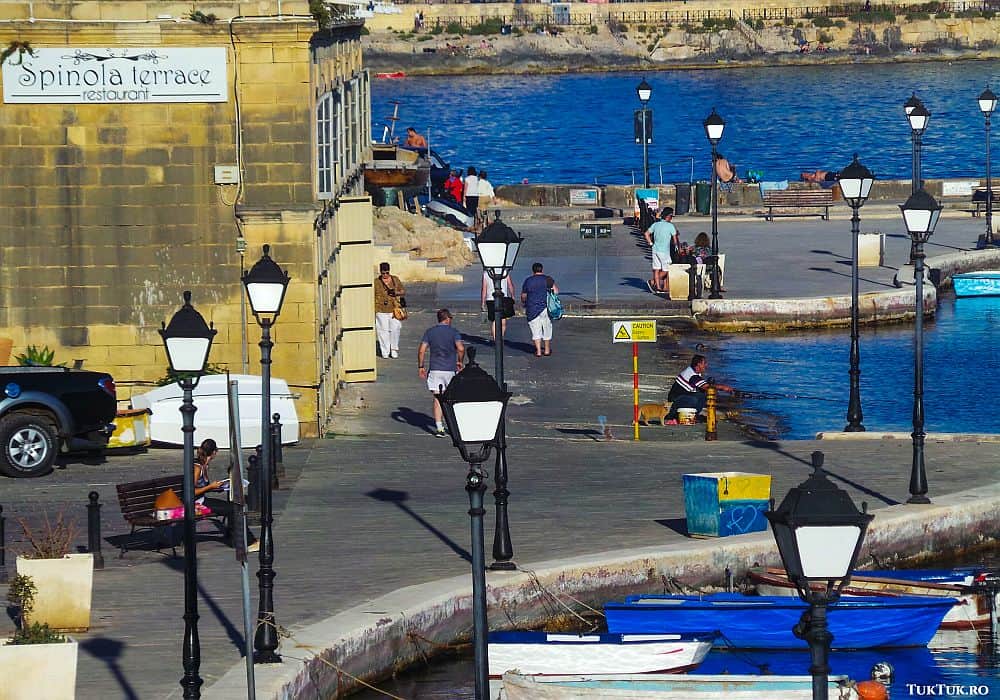
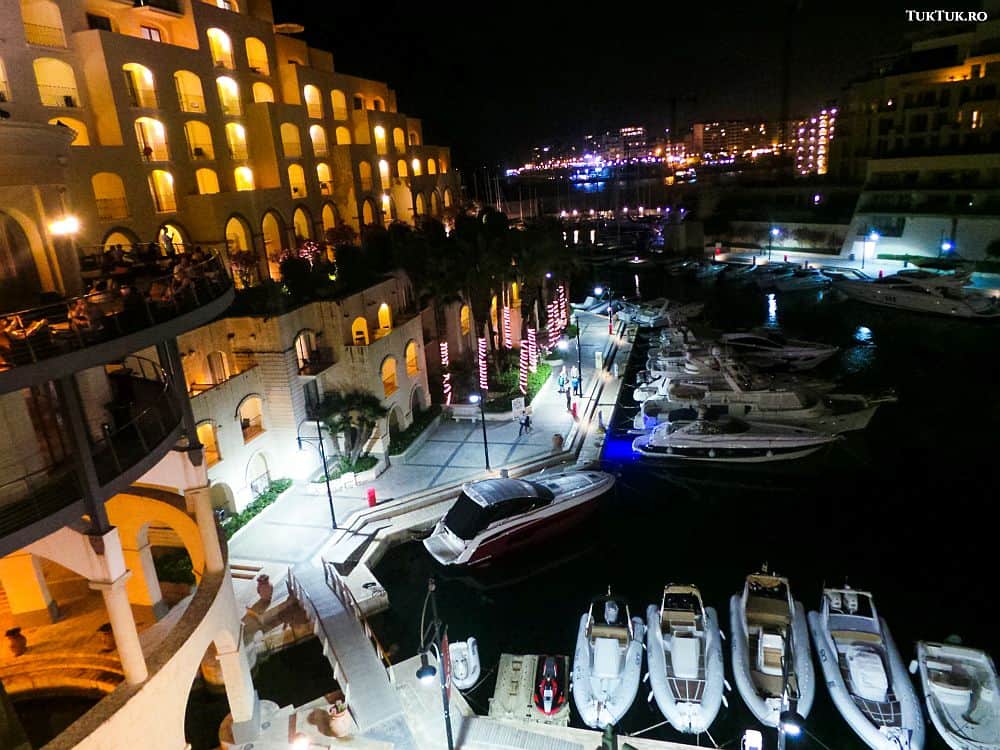
I only spent a little bit of time in St. Julian’s, not delving into the former fishing village that has become the focal point for young visitors to the island in recent decades. Still, it was enough of a glimpse to realize that this is the place to aim for if you’re looking for a good time—particularly in the Paceville district, where nightclubs are eager to welcome their customers who are generally under 25.
And speaking (tangentially) of music, it’s good to know that traditional Maltese music is called Għana and is a kind of slow folk, played on a guitar-like instrument (or even a guitar).
Interestingly, one of the three variants of Għana (Bormliża) involves the performer (always a man) making increasingly high-pitched sounds, going as far as falsetto.
Traditional Maltese music:
The most striking foreign influences in Malta are Arabic and British. You notice the former from the outset in Maltese, which seems almost impossible – the only Semitic language written in the Latin alphabet. It’s hard to pronounce the names of towns and streets or even to remember them. Luckily there are maps.
The British, the last to deal directly with the Maltese, have influences in other areas. For example, in Malta, you drive on the left, which can make you think twice about hiring a car.
It’s awkward to enter the roundabout on the other side, and it would take several days to get used to it. Besides, Malta’s roads are full of roundabouts. Bonus: in the year I visited, they were working hard to widen them, thanks to massive access to EU funds. But the public transport system – the buses, to put it bluntly – works very well. As for taxis, you should know that they don’t have a per-kilometer charging system – you simply ask the driver up front how much it costs to take you from one place to another.
In future posts, we will look at the best things to do in Malta, starting with the capital Valletta and continuing with Gozo, the other major island of the archipelago.
You may also like: 10 things to see and do in Valencia

